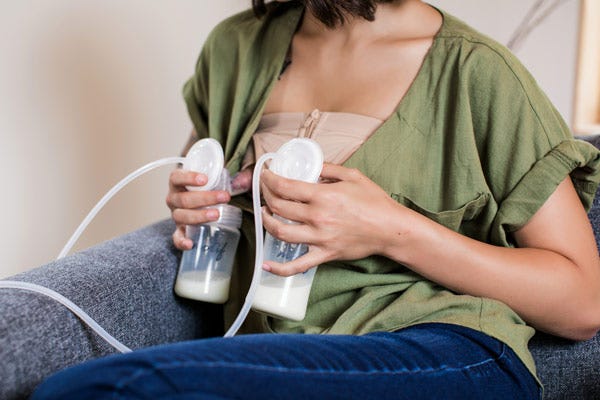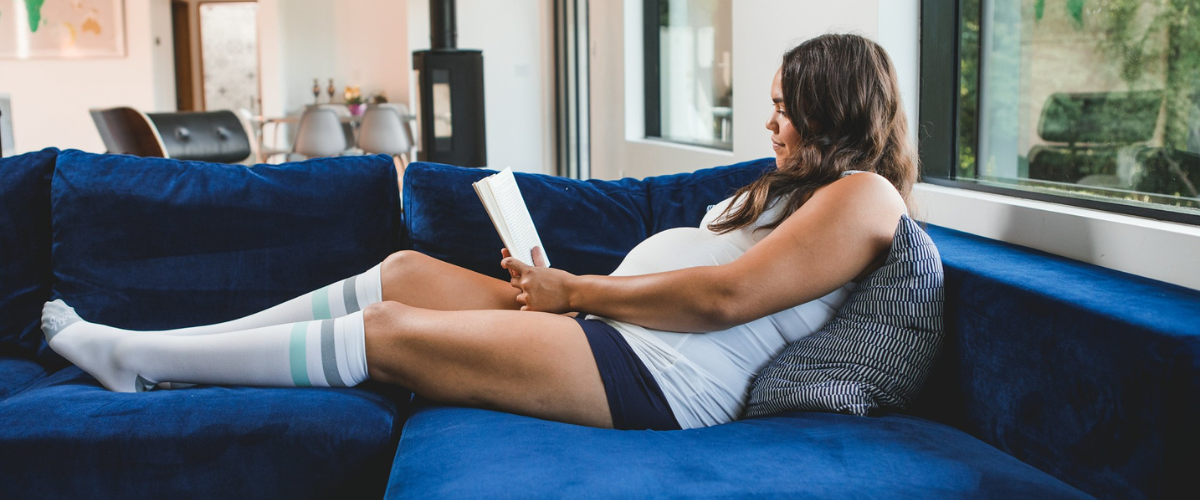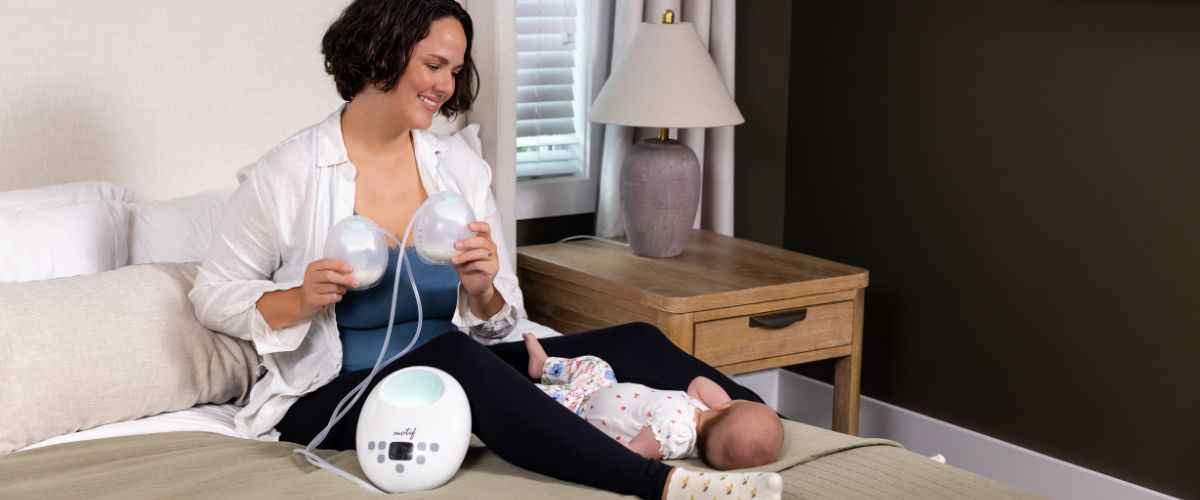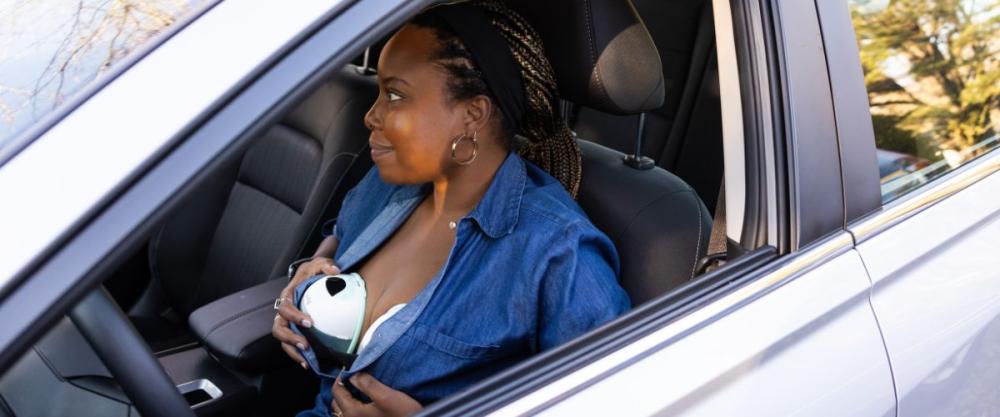What is Engorgement?
Information about how to manage engorgement and clogged ducts can be found all over the internet. But how do you know what’s true? Did you know that some of the most commonly recommended treatments can actually make engorgement and clogged ducts worse, possibly even leading to mastitis? Both clogged ducts and engorgement fall into a spectrum of breast inflammation. Breast engorgement and clogged ducts can happen at any time during your breastfeeding journey. Having the most up-to-date information about how to manage these conditions can keep you moving toward your breastfeeding goals.
Engorgement is an increase in fluid and swelling within the breast. Engorgement may occur in the first 10 days postpartum as milk production ramps up. Most commonly, mothers experience this type of engorgement between days 3-5 after birth. This is commonly referred to as breast milk “coming in”. This type of engorgement usually resolves on its own by two weeks postpartum. Symptoms of engorgement include breast swelling, firmness, pain, and difficulty emptying your breasts.
Engorgement can also occur later in your breastfeeding journey when:
- There is a decrease in the amount of milk removed from your breasts or you are not nursing or pumping as often.
- You are making an overabundance of milk, often called oversupply.
- You stop breastfeeding suddenly.
What are Clogged Milk Ducts?
What is commonly known as clogged or plugged ducts is actually what healthcare professionals are now calling ductal narrowing. The ductal narrowing is a more accurate term because new research has shown that blockages of thick, sticky milk aren’t actually the cause of the milk flow traffic jam occurring inside the breast. The tender “knot” that is often felt is an area of inflammation that is pushing on and narrowing milk ducts.
The swollen tissue causes the milk ducts to narrow, resulting in a much smaller space for milk to travel through. Symptoms of clogged ducts (ductal narrowing) include pain during letdown, a painful knot or lump that improves or gets smaller after nursing or pumping, and difficulty emptying your breasts.
How are Clogged Ducts (Ductal Narrowing) and Engorgement Related?
Potential causes of and tips for managing ductal narrowing and engorgement are similar because both are products of inflammation in the breast. Recommended management strategies focus on reducing overall inflammation of the breast tissue.
Tips for Preventing Clogged Ducts (Ductal Narrowing) and Engorgement
Causes of Clogged Ducts (Ductal Narrowing) and Engorgement
- Skipped nursing or pumping sessions
- Extending the time between nursing or pumping sessions
- Difficulty draining the breasts sufficiently - could be related to a poor latch or incorrect flange size.
- Pumping more milk than baby eats
- Hyperlactation (oversupply)
- Too tight or ill-fitting bras
- Suddenly stopping breastfeeding
- Thrush, bacterial infections, or mammary dysbiosis (overgrowth of certain bacteria within the breasts)
Tips for Preventing Clogged Ducts (Ductal Narrowing) and Engorgement
- Meet with a lactation consultant or take a breastfeeding class to learn about how lactation supply and demand work.
- Practice “on demand” or “on cue” feeding by responding to the baby’s early hunger cues.
- Feed according to the baby’s needs without the goal of “emptying the breasts”.
- If pumping, avoid expressing milk for the goal of creating a large freezer stash. Excessive pumping can create an oversupply and cause ductal narrowing and engorgement.
- If you have an oversupply, connect with an IBCLC for a plan to manage it.
Make sure your flange fits appropriately. Remember, pumping shouldn’t hurt! If it does, reach out to an experienced IBCLC for help.
- Eat a healthy, balanced diet focusing on whole foods.
- Avoid nipple shields unless specifically directed by a lactation consultant to use one to facilitate latching.
- Avoid deep massage of the breasts! Use gentle touch, such as light stroking, when massaging your breasts. Lactation massagers or vibrating devices should also be avoided.
- Make sure you have well-fitting bras.
- Avoid tight or restrictive clothing. Remove sports bras and tanks as soon as possible after your workout.
Managing Engorgement
In the first two weeks postpartum, the best way to managing engorgement is to watch for the baby’s hunger cues and to feed your baby on demand. This is true whether you are exclusively nursing, exclusively pumping, or a combination of both. In general, 8-12 milk removals every 24 hours are adequate, and excessive pumping can lead to overproduction of breast milk. This is why lactation consultants recommend waiting until about 4 weeks postpartum to introduce pumping unless there is a low supply issue or you are replacing nursing sessions with pumping sessions as part of your feeding plan.
Consider using hand expression to remove a small amount of milk if engorgement is making your breasts too firm for the baby to latch onto. This can help soften the breast so the baby can latch more easily and deeply. I recommend that every breastfeeding mother learn how to hand express as it is an incredibly handy skill!
Reverse Pressure Softening is another technique that can help soften the breasts if they are too firm for the baby to latch. With this technique, gentle pressure is applied to the areola to temporarily decrease swelling at the base of the nipple and surrounding the areola. It is best to connect with an International Board Certified Lactation Consultant or other trained healthcare provider to learn how to perform Reverse Pressure Softening.
Don’t reach for your breast pump! Breast pumping used to be encouraged as a way to manage engorgement, but the most up-to-date recommendations from the Academy of Breastfeeding Medicine (ABM) are to minimize the use of breast pumps during engorgement unless you regularly pump while separated from the baby or are exclusively pumping.


If you normally nurse your baby, ABM advises to only pump for 3-5 minutes (just enough to take some pressure off) as pumping longer encourages your body to produce even more milk and can worsen engorgement.
Opt for cold packs. The ABM also recommends avoiding warm compresses or hot packs during engorgement as these can make your symptoms worse. Instead, ice packs or cold compresses are the way to go! You may have also heard about cold cabbage leaves being an appropriate remedy, but the research just isn’t there to support this recommendation. Cabbage can be contaminated with a bacteria called Listeria which can make a baby very sick.
Talk to your doctor about ibuprofen and acetaminophen to ease discomfort and reduce inflammation.
Reach out to an IBCLC to help determine the underlying cause of engorgement if you are beyond the first two weeks postpartum.
Tips for Managing Clogged Ducts (Ductal Narrowing)
Cool compresses or cold packs can be soothing and can reduce inflammation after nursing or pumping. Just like with engorgement, hot packs or hot compresses are not recommended.
Feed your baby “on cue” and avoid extra pumping.
Consider gentle massage to facilitate lymphatic drainage. Use gentle pressure like when you touch your face. Lying down can help make this type of massage more effective as you gently stroke from the nipple toward your underarms.
A lactation-specific probiotic can help support a healthy breast microbiome.
Talk to your doctor about ibuprofen and acetaminophen to ease discomfort and reduce inflammation.
Avoid non-evidence-based treatments such as castor oil compresses, Epsom salt soaks, use of a battery-operated toothbrush to “break up clogs”, etc.
Reach out to an IBCLC for help, especially if ductal narrowing reoccurs.
Watch Out for Mastitis
The Academy of Breastfeeding Medicine has established that ductal narrowing, engorgement, and mastitis are all part of a spectrum of inflammation of the breast tissue. Mastitis can be caused by a breast infection and symptoms of mastitis should be evaluated by your healthcare provider. Contact your healthcare provider if you have in of the following symptoms.
- Fever
- Body-aches or headaches
- Changes in the color of your breast or streaking on your breast
- Worsening pain in the affected breast
- Spreading of the affected area
- Flu-like symptoms
While dealing with engorgement or ductal narrowing can be frustrating, know that these issues are temporary, and with proper management, you’ll be back on track to reach your breastfeeding goals. Taking care of yourself is an important part of taking care of your baby, so make it a priority to practice the prevention tips above and don’t put off dealing with any signs or symptoms of ductal narrowing or engorgement.
References
Johnson, H., Eglash, A., Mitchell, K., Leeper, K., Smillie, C., Moore-Ostby, L., Manson,
N., Simon, L. & the Academy of Breastfeeding Medicine. (2020). ABM clinical protocol #32: Management of hyperlactation. Breastfeeding Medicine, 15(3): 1-6.
Mitchell, K., Johnson, H., Rodriguez, J., Eglash, Scherzinger, C., Zakarija-Grkovic, I.,
Cash, K., Berens, P., Miller, B. & the Academy of Breastfeeding Medicine. (2022). Academy of Breastfeeding Medicine clinical protocol #36: The mastitis spectrum, revised 2022. Breastfeeding Medicine, 17(5): 360-376.
Information provided in blogs should not be used as a substitute for medical care or consultation.











